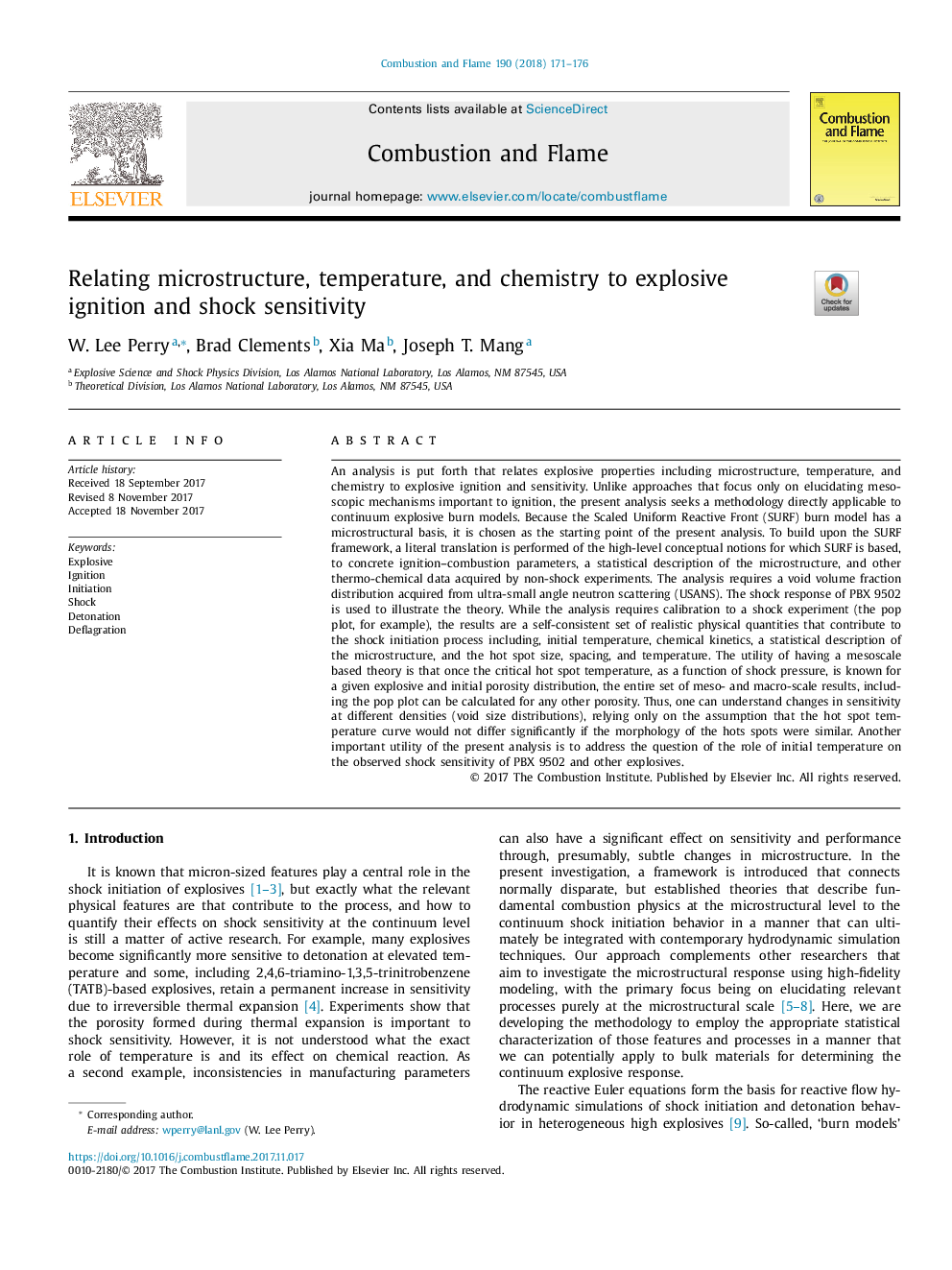| کد مقاله | کد نشریه | سال انتشار | مقاله انگلیسی | نسخه تمام متن |
|---|---|---|---|---|
| 6593826 | 1423547 | 2018 | 6 صفحه PDF | دانلود رایگان |
عنوان انگلیسی مقاله ISI
Relating microstructure, temperature, and chemistry to explosive ignition and shock sensitivity
ترجمه فارسی عنوان
ارتباط ریزساختار، دما و شیمی با انفجار مواد منفجره و حساسیت شوک
دانلود مقاله + سفارش ترجمه
دانلود مقاله ISI انگلیسی
رایگان برای ایرانیان
کلمات کلیدی
انفجاری آتش گرفتن، شروع، شوکه شدن، انفجار، فرورفتگی
موضوعات مرتبط
مهندسی و علوم پایه
مهندسی شیمی
مهندسی شیمی (عمومی)
چکیده انگلیسی
An analysis is put forth that relates explosive properties including microstructure, temperature, and chemistry to explosive ignition and sensitivity. Unlike approaches that focus only on elucidating mesoscopic mechanisms important to ignition, the present analysis seeks a methodology directly applicable to continuum explosive burn models. Because the Scaled Uniform Reactive Front (SURF) burn model has a microstructural basis, it is chosen as the starting point of the present analysis. To build upon the SURF framework, a literal translation is performed of the high-level conceptual notions for which SURF is based, to concrete ignition-combustion parameters, a statistical description of the microstructure, and other thermo-chemical data acquired by non-shock experiments. The analysis requires a void volume fraction distribution acquired from ultra-small angle neutron scattering (USANS). The shock response of PBX 9502 is used to illustrate the theory. While the analysis requires calibration to a shock experiment (the pop plot, for example), the results are a self-consistent set of realistic physical quantities that contribute to the shock initiation process including, initial temperature, chemical kinetics, a statistical description of the microstructure, and the hot spot size, spacing, and temperature. The utility of having a mesoscale based theory is that once the critical hot spot temperature, as a function of shock pressure, is known for a given explosive and initial porosity distribution, the entire set of meso- and macro-scale results, including the pop plot can be calculated for any other porosity. Thus, one can understand changes in sensitivity at different densities (void size distributions), relying only on the assumption that the hot spot temperature curve would not differ significantly if the morphology of the hots spots were similar. Another important utility of the present analysis is to address the question of the role of initial temperature on the observed shock sensitivity of PBX 9502 and other explosives.
ناشر
Database: Elsevier - ScienceDirect (ساینس دایرکت)
Journal: Combustion and Flame - Volume 190, April 2018, Pages 171-176
Journal: Combustion and Flame - Volume 190, April 2018, Pages 171-176
نویسندگان
W. Lee Perry, Brad Clements, Xia Ma, Joseph T. Mang,
